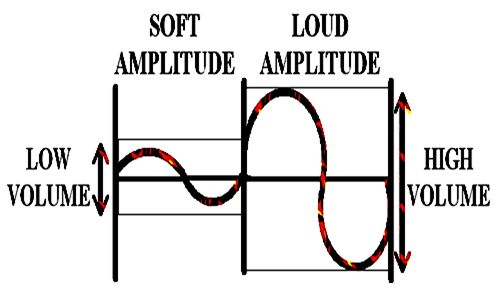SOUND AMPLITUDE
Now that you have learned that pitch is the frequency at which sound cycles vibrate per second, it’s time to learn about the amplitude of sound waves.
Now that you have learned that pitch is the frequency at which sound cycles vibrate per second, it’s time to learn about the amplitude of sound waves.
Amplitude is the intensity of sound-cycle vibrations. The degree of intensity of sound is called its Volume, which makes sense since a larger volume of air is set in motion when sound vibration cycles are louder.Amplitude is the intensity of sound-cycle vibrations. The degree of intensity of sound is called its Volume, which makes sense since a larger volume of air is set in motion when sound vibration cycles are louder.


There is a world of information about sound with many more principles of sound science to learn.
For our purposes, we will be working with determining Pitch and making changes in Volume while playing.
In order to categorize volume properly and learn how volume is displayed in written music, we will now enter a new Quest layer.
Learning Focus Practice Tutorial Weight in Motion Gravity Leverage Balance
Potential and Kinetic Energy The R’s of Remembering Practice Purpose Music Staff Evolution
Music Clef Origins Scroll History Peg Information Bowed String Instrument History
Friction Bass Tuning Mechanism Modern-Day Violin Family Bridges Through the Ages
Potential and Kinetic Energy The R’s of Remembering Practice Purpose Music Staff Evolution
Music Clef Origins Scroll History Peg Information Bowed String Instrument History
Friction Bass Tuning Mechanism Modern-Day Violin Family Bridges Through the Ages








